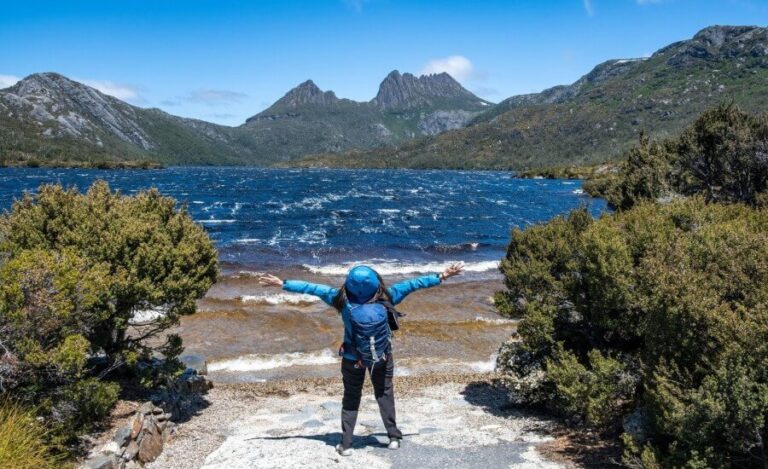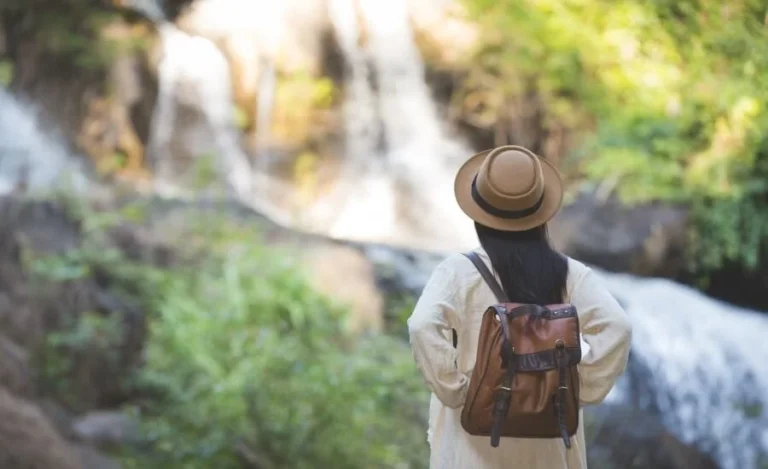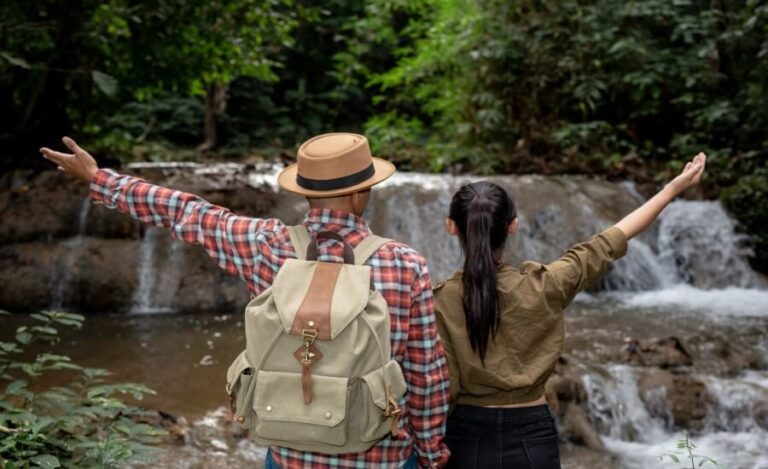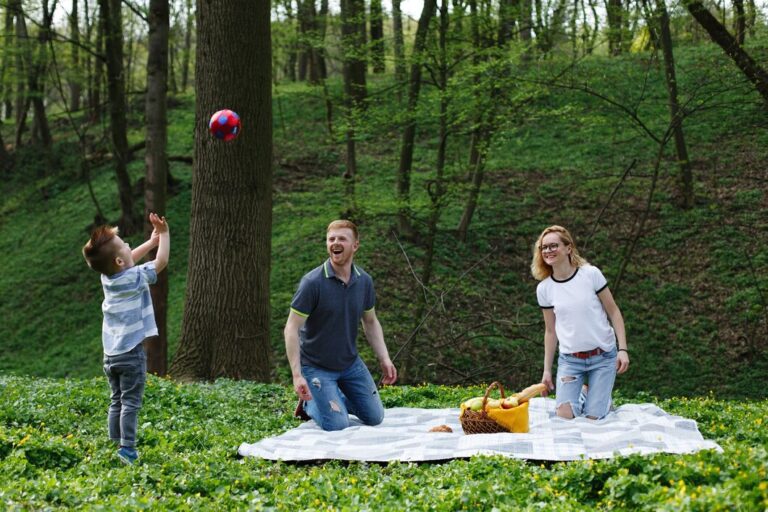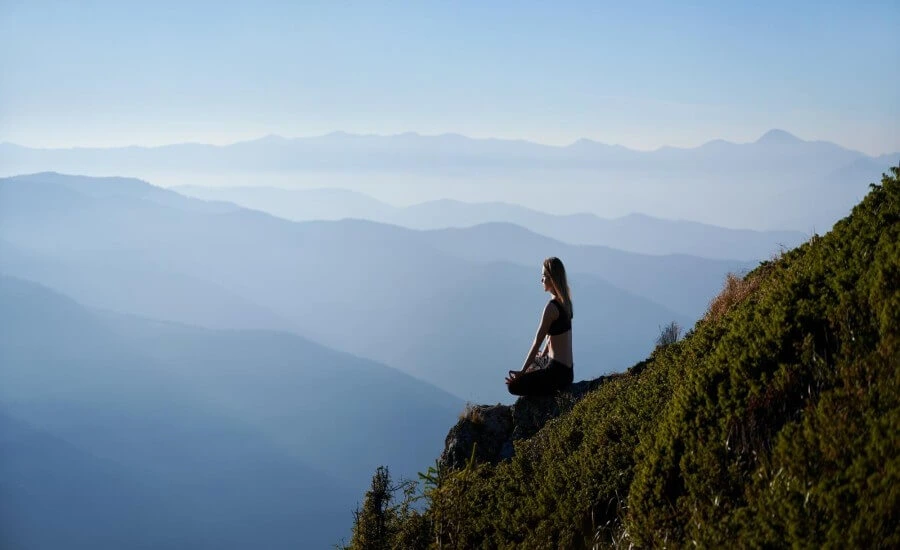
Consider the soundscape of your average day. Notifications ping, traffic hums, conversations overlap, screens flicker, and perhaps loudest of all, the relentless chatter of your own mind runs its endless commentary. We live immersed in a symphony of noise, both external and internal. While connection and information have their place, this constant barrage can leave us feeling scattered, overwhelmed and increasingly disconnected from ourselves. We might crave quiet, a moment to simply hear ourselves think, or perhaps, to hear something deeper still.
In this cacophony, the idea of intentionally entering into silence might seem radical, even intimidating. Yet, embarking on a silent retreat is precisely that – a deliberate stepping away from the noise to create space for something else to emerge. It’s not about emptiness, but about creating a container for profound listening and self-discovery. This guide explores silent retreats guide to rediscover inner voice & peace. We’ll delve into what these retreats entail, why silence is so powerful, and how intentionally disconnecting from outer noise can help you reconnect with the quiet wisdom within. Prepare to explore the landscape of stillness and the potential for transformation it holds.
The Unspoken Need: Why Seek Silence in a Noisy World?

Our modern world often equates noise with productivity and silence with emptiness or inactivity. We fill commutes with podcasts, workouts with music, and quiet moments with scrolling. Yet, deep down, there’s a growing recognition of the toll this constant stimulation takes. Seeking silence isn’t just a luxury; for many, it’s becoming a vital necessity for well-being.
The science is increasingly clear: chronic noise exposure is linked to increased stress, anxiety, sleep disturbances, and difficulty concentrating. Our nervous systems are perpetually activated, rarely getting the chance to rest and reset. But the noise isn’t just external. Our own minds generate a constant stream of thoughts, worries, plans, and judgments – an internal chatter that can be just as exhausting.
Choosing silence, as offered in a retreat setting, provides a powerful antidote.
- Mental De-cluttering: Stepping away from external stimuli allows the mind to gradually settle. Like letting sediment fall in muddy water, silence allows thoughts to slow down, revealing greater clarity beneath the surface.
- Nervous System Regulation: Without the constant need to process external input, the sympathetic nervous system (our “fight or flight” response) can stand down, allowing the parasympathetic nervous system (“rest and digest”) to take over. This promotes deep relaxation and restoration.
- Enhanced Focus & Concentration: Regularly engaging in periods of silence can actually improve our ability to focus when we return to the world of sound and activity. It’s like resting a muscle, allowing it to function more effectively later.
- Space for Deeper Processing: The absence of outward conversation and distraction creates fertile ground for introspection. Feelings, insights, and unresolved issues that get drowned out by daily noise may gently surface, offering an opportunity for awareness and understanding.
In essence, seeking silence is about reclaiming our inner space. It’s recognizing that true rest and clarity often require not just physical stillness, but mental quiet too. Have you ever noticed how a moment of unexpected quiet can feel like a deep exhale? A silent retreat offers an extended opportunity for just that.
What Exactly Happens on a Silent Retreat? Demystifying the Stillness

The term “silent retreat” can conjure images of austere isolation, but the reality is usually structured, supportive, and deeply intentional. While formats vary depending on the tradition (e.g., Vipassana, Zen, Christian contemplative, secular mindfulness) and duration, most silent retreats share core elements designed to facilitate inner exploration. Understanding What Exactly Happens on a Silent Retreat? Can help demystify the experience.
Noble Silence: This is the cornerstone. Participants typically agree to maintain silence not just verbally, but often gesturally too. This usually includes:
- No talking with fellow retreatants.
- Avoiding eye contact (to minimize non-verbal communication and distraction).
- No reading, writing (unless specifically part of the practice, like journaling prompts), or use of electronic devices (phones, laptops are usually collected or turned off). The purpose isn’t punishment, but to minimize external input and turn awareness inward. It creates a unique atmosphere of shared quietude and focused introspection.
Structured Schedule: Far from being aimless, silent retreats typically follow a rigorous schedule, providing a supportive container for the practice. A typical day might include:
- Meditation Periods: Multiple sessions of sitting meditation (e.g., focusing on breath, body sensations, or open awareness) and walking meditation. These are often guided initially by a teacher.
- Mindful Movement: Gentle practices like mindful yoga or qigong may be incorporated to balance stillness and connect with the body.
- Simple Meals: Meals are eaten slowly and mindfully, often in silence, appreciating the food and the act of nourishment.
- Work Periods (Sometimes): Some retreats incorporate mindful work periods (like chopping vegetables or sweeping) as part of the practice.
- Teacher Guidance: There are usually dharma talks (teachings related to the practice) and opportunities for brief, individual check-ins with the teacher(s) to discuss challenges or insights.
- Nature Connection: Time may be allocated for mindful walking outdoors, connecting with the natural environment.
Simplicity: The environment is usually simple and conducive to quiet reflection – basic accommodation, wholesome food, often set in nature. The lack of external choices (what to wear, what to eat, what to do) frees up mental energy for the inner work.
The structure, silence, and guidance work together to create an environment where participants can safely explore their inner landscape without the usual distractions and demands of daily life. It’s a dedicated space for deep listening.
The Inner Landscape: Discoveries Made in Silence

When the constant stream of external noise ceases, what happens? The journey into silence is often a journey into one’s own inner landscape – a territory that can be surprising, challenging, beautiful, and ultimately, revealing. Without the usual distractions, the contents of our own minds come into sharper focus.
Initial Restlessness: Often, the first thing people notice isn’t profound peace, but the sheer volume of their own internal chatter! The mind might race, planning, worrying, replaying conversations. Physical restlessness can also arise. This is entirely normal – it’s the mind adjusting to the lack of its usual stimuli. The practice is to gently notice this without judgment and return to the anchor (like the breath).
Emergence of Thoughts & Memories: As the surface static settles, deeper layers may emerge. Long-forgotten memories, unresolved thoughts, patterns of thinking, and habitual emotional reactions can surface. Silence provides the space to simply observe these without immediately reacting or pushing them away.
Confronting Difficult Emotions: Sometimes, the feelings that arise in silence are challenging – boredom, frustration, sadness, anxiety, or anger. A silent retreat, supported by guidance, offers a safe container to meet these emotions with awareness and compassion, rather than suppressing them. This process can be incredibly healing, allowing for integration and release.
Heightened Sensory Awareness: As mental chatter quiets, sensory perception often sharpens. The taste of food becomes more vivid, the feeling of the breeze more noticeable, the sounds of nature more distinct. There’s a growing appreciation for simple, present-moment experiences.
Insights & Clarity: In the space created by silence, moments of insight or clarity can arise spontaneously. Solutions to problems, new perspectives on relationships, a deeper understanding of one’s own patterns, or a sense of direction may emerge not through forceful thinking, but through quiet allowing.
Accessing the “Inner Voice”: This is the heart of the journey for many. Beyond the surface chatter and deeper emotional currents lies a quieter, more intuitive wisdom – often called the inner voice, intuition, or inner knowing. Silence creates the possibility of hearing this subtle guidance, the authentic desires, values, and truths that often get drowned out. It’s less about finding definitive answers and more about reconnecting with your own inner compass.
The inner landscape revealed in silence is unique to each individual, but the journey often involves moving through restlessness and difficulty towards greater clarity, self-understanding, and a connection to a deeper part of oneself. What do you imagine might surface for you in prolonged silence?
Beyond Words: The Profound Benefits of Stillness

The commitment to spending time in silence, particularly within the supportive structure of a retreat, yields benefits that ripple through one’s mental, emotional, and even spiritual life long after the retreat ends. These advantages go far beyond simply feeling rested; they touch upon fundamental aspects of well-being.
- Enhanced Self-Awareness: By observing the mind’s habits, thought patterns, and emotional reactions without distraction, you gain a much clearer understanding of your inner workings. You see your triggers, your assumptions, your default modes – the first step toward conscious change.
- Improved Emotional Regulation: The practice of sitting with difficult emotions as they arise, without immediately reacting or suppressing them, builds resilience and emotional intelligence. You learn to acknowledge feelings without being overwhelmed by them.
- Increased Compassion (for Self & Others): Witnessing the universal human tendencies within your own mind – the anxieties, judgments, desires – often fosters greater self-compassion. This understanding naturally extends outward, leading to increased empathy and patience with others.
- Deeper Spiritual Connection (for some): For those inclined, silence can open doors to a deeper sense of connection – whether to a higher power, nature, universal consciousness, or simply a profound sense of interconnectedness. It transcends religious dogma, touching a core human yearning for meaning.
- Clarity on Life Direction & Values: The quiet space allows underlying values and priorities to surface. Stripped of external pressures and expectations, you may gain clarity on what truly matters, leading to more aligned life choices post-retreat.
- Reduced Reactivity: By practicing observing thoughts and impulses without acting on them, you cultivate a “pause button” between stimulus and response. This translates into less reactivity and more thoughtful responses in daily interactions.
- Appreciation for Simplicity: Returning from the stripped-down environment of a retreat often brings a renewed appreciation for the simple things in life – a warm meal, a comfortable bed, the presence of loved ones, the beauty of nature.
The stillness cultivated on retreat isn’t just an absence of noise; it’s a presence of awareness, clarity, and connection. It’s an investment in inner peace that pays lasting dividends. What benefit of silence resonates most with your current needs?
Integrating the Quiet: Bringing Silence Home

Returning from the deep quiet of a silent retreat to the bustling noise of everyday life can be jarring. The key is not to expect to maintain retreat-level silence, but to intentionally integrate moments of quiet and the awareness cultivated during the retreat into your daily rhythm. Gentle integration helps sustain the benefits and prevents overwhelm.
- Plan a Gentle Re-Entry: If possible, allow a buffer day or two after the retreat before plunging back into full work and social commitments. Ease back into communication and sensory input gradually.
- Guard Your mornings: Try to preserve some quiet time upon waking. Resist the urge to immediately check your phone. Start the day with a few minutes of quiet sitting, mindful tea drinking, or simply gazing out the window.
- Schedule Micro-Silences: Intentionally build short pockets of silence into your day. Turn off the radio during your commute. Take a 5-minute silent break between meetings. Eat one meal a day without screens or conversation. These small moments add up.
- Continue Formal Practice: Maintain a regular meditation practice, even if it’s just 10-15 minutes a day. This anchors the awareness cultivated on retreat.
- Mindful Communication: Bring awareness to your speech. Notice the impulse to fill silence in conversations. Practice listening more deeply to others. Speak more intentionally.
- Digital Boundaries: Be conscious of reintroducing technology. Set specific times for checking email or social media, rather than letting it permeate your entire day. Consider designated tech-free times or zones at home.
- Connect with Nature: Spend time in natural settings, which often have a calming effect and provide a gentler soundscape.
- Reflect & Journal: Continue to make space for introspection, perhaps through journaling, to process experiences and connect with your inner voice.
- Self-Compassion: Be patient with yourself. Integration takes time, and the intensity of retreat insights may fade. Focus on cultivating consistent small habits of quiet and awareness.
The goal isn’t to replicate the retreat environment, but to carry the essence of the retreat – the stillness, awareness, and connection – into the fabric of your everyday life. Small, consistent efforts are more sustainable than striving for an unrealistic ideal.
Common Concerns & Solutions for Silent Retreat Goers

The prospect of extended silence can trigger various anxieties. Knowing these are common and having ways to approach them can make considering or attending a silent retreat feel less daunting.
- Concern: “I’ll go crazy with boredom or restlessness! How will I fill the time?”
- Solution: Reframe “boredom” as “space.” The structured schedule usually keeps you occupied with practice (sitting, walking, eating). When restlessness or boredom does arise (and it likely will), view it not as a problem, but as an object of observation. Get curious about the feeling of boredom or restlessness itself. Where do you feel it in your body? What thoughts accompany it? Meeting these states with curiosity transforms them from enemies into teachers.
- Concern: “What if difficult or painful emotions or memories come up?”
- Solution: This is a valid concern and a common experience. Retreats offer a supportive container for this. Trust the process and the guidance. Teachers are experienced in helping participants navigate difficult experiences. The practice involves learning to meet all arising phenomena – pleasant and unpleasant – with awareness and equanimity. See it as an opportunity for healing and release, rather than something to be feared. Self-compassion is key.
- Concern: “Will I feel incredibly lonely without any interaction?”
- Solution: While you are in silence with others, the experience is primarily internal. Many find a unique sense of connection in the shared quietude – knowing everyone is undertaking a similar inner journey. The focus shifts from external validation to inner connection. Loneliness may arise, but like other feelings, it becomes something to observe with kindness. You are alone, together.
- Concern: “I’m not good at meditation / I can’t stop thinking / What if I do it ‘wrong’?”
- Solution: There is no ‘wrong’ way to experience your mind. Meditation isn’t about stopping thoughts (which is impossible), but about noticing them without judgment and gently returning your attention to your chosen anchor (e.g., breath). Everyone’s mind wanders. The instruction is simple, though not always easy: notice, and gently return. Retreats are suitable for beginners and experienced meditators alike. The focus is on the practice of returning, not achieving a “perfect” state.
- Concern: “Is it physically demanding? I have physical limitations.”
- Solution: Most retreats offer modifications. Sitting can be done on cushions, benches, or chairs. Walking meditation is usually slow and gentle. Communicate any physical limitations or health concerns to the retreat organizers beforehand. They can advise on suitability and necessary accommodations. Choose a retreat style that aligns with your physical capacity.
Approaching these fears with realistic expectations and a dose of self-kindness allows you to see the challenges not as deterrents, but as integral parts of a potentially transformative journey.
Preparing for Your Silent Journey: A Practical Checklist
Thoughtful preparation can help you settle into the silence more easily and get the most out of your retreat experience. Here’s a checklist to guide you:
- Research Thoroughly: Choose a retreat center and tradition that resonates with you. Read reviews, understand the specific rules (especially regarding silence), daily schedule, and teacher’s philosophy.
- Understand the Commitment: Be clear about the duration and the level of silence expected. Ensure you are genuinely willing to commit to the guidelines for the entire period.
- Manage Expectations: Let go of specific expectations about having profound insights or reaching enlightenment. Approach the retreat with openness and curiosity about whatever arises. Be prepared for both challenges and moments of peace.
- Pack Mindfully:
- Comfortable, Modest Clothing: Loose-fitting layers suitable for sitting and mindful movement. Check the dress code guidelines. Avoid distracting logos or bright patterns.
- Toiletries: Basic, unscented items.
- Meditation Cushion/Bench (Optional): Check if provided or if you prefer your own. Chairs are almost always available.
- Shawl or Blanket: For warmth during sitting meditation.
- Reusable Water Bottle.
- Journal & Pen (If Permitted): Some retreats allow journaling, others discourage it to keep focus on direct experience. Check guidelines.
- Basic Medications & First-Aid.
- Slip-on Shoes: Easy to take on/off when entering/leaving meditation halls.
- Alarm Clock (Non-Phone): If needed for waking up (often a bell is used).
- Leave Behind: Books, electronics (phone, laptop, tablet), distracting items.
- Inform Contacts: Let family/friends know you will be completely out of contact. Provide them with the retreat center’s emergency contact number for true emergencies only. Set up an out-of-office reply for email.
- Mental Preparation: Gently start reducing stimuli a few days prior if possible (less screen time, news, social media). Reflect on your intention for attending the retreat.
- Physical Preparation: Ensure you are reasonably rested. If you’re new to sitting meditation, practice sitting quietly for short periods beforehand to get accustomed to it.
- Read Pre-Retreat Materials: Pay close attention to any information sent by the retreat center regarding logistics, rules, and what to bring/not bring.
Proper preparation sets the stage, allowing you to arrive feeling ready to surrender to the process and embrace the silence.
Final Thoughts | The Silent Retreats

Embarking on Silent Retreats is a courageous step inward. In a world that constantly clamors for our attention, choosing silence is a powerful act of self-care and self-discovery. It’s an opportunity to quiet the external noise and internal chatter long enough to hear the subtler, wiser voice within – the voice of our own intuition, values, and authentic self.
The journey through silence may not always be easy; it can bring confrontation with restlessness, boredom, and difficult emotions. Yet, within that challenge lies immense potential for growth, healing, and clarity.
By creating space for deep listening – to our bodies, our minds, our hearts – we reconnect with ourselves on a fundamental level. We return not necessarily with all the answers, but often with a greater sense of inner peace, self-awareness, and a clearer understanding of what truly matters.
The silence of a retreat doesn’t end when you leave; its echoes can resonate in your daily life, reminding you to pause, breathe, and listen. It fosters a capacity for stillness amidst the storm, enabling you to navigate the world with greater presence and intention.
If you feel the pull towards quiet, if you sense a need to unplug from the noise and reconnect with yourself, consider exploring the path of silence. It might be through a weekend retreat, a longer immersion, or simply incorporating small moments of stillness into your day. Listen closely – what might your inner voice be whispering for you to hear? The journey begins with the willingness to be still.
